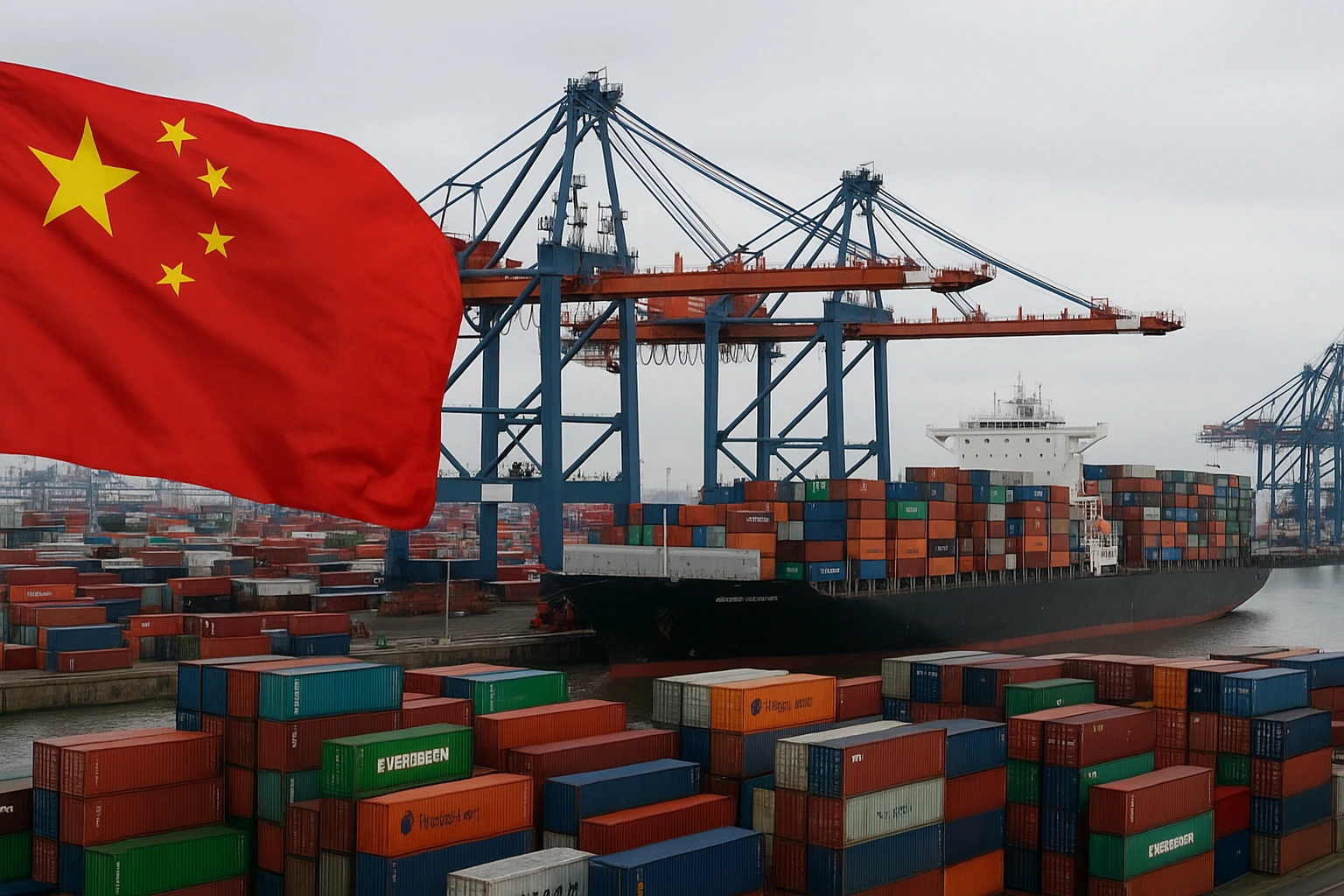BERLIN (TECHY QUANTUM) — China has overtaken the United States as Germany’s top trading partner in the first eight months of 2025, reversing last year’s trend as renewed US tariffs and weaker export demand hit Europe’s largest economy, preliminary data from the Federal Statistical Office showed.
Trade between Germany and China reached 163.4 billion euros $190.7 billion from January through August, slightly surpassing the 162.8 billion euros recorded with the United States, according to Reuters calculations.
The shift restores China’s long held position, interrupted only in 2024, and underscores how policy changes and global competition continue to reshape China Germany trade.
For nearly a decade, China was Germany’s leading trading partner, driven by deep industrial ties and booming exports. That changed in 2024 when the United States briefly overtook China after Berlin sought to “de risk” from Beijing amid political tensions.
President Donald Trump’s return to the White House this year, and his renewed tariffs on European goods, have now tilted the balance back.
“Tariffs have pushed down German exports to the United States, which fell 7.4 percent in the first eight months of the year compared with 2024,” said Dirk Jandura, president of the BGA foreign trade association.
“There is no question that US trade policy is an important reason for this decline.” Exports to the US in August alone dropped 23.5 percent year on year, marking the steepest decline since 2020.
Economists say the data reflects the vulnerability of Germany’s export-heavy model to political and currency pressures.
“The renewed import boom from China is worrying,” said Carsten Brzeski, global head of macro at ING. “These imports are coming in at dumping prices, which increases dependency and adds strain on local producers.”
He added that with a stronger euro and ongoing tariff uncertainty, “German exports to the US are unlikely to recover soon.”
Trade expert Claudia Weber from the German Institute for International and Security Affairs said Berlin faces a dilemma.
“Germany wants to reduce exposure to China, but its economy keeps pulling it back,” she said. “This is the paradox of China Germany trade economically necessary but politically complicated.”
Exports to China fell 13.5 percent year on year to 54.7 billion euros, while imports from China rose 8.3 percent to 108.8 billion euros.
By contrast, exports to the US totaled 99.6 billion euros in the same period, reflecting the direct impact of tariffs. Imports from the U.S. remained stable, largely in energy and tech goods.
According to the German Economic Institute, China now accounts for about 12 percent of Germany’s total foreign trade, compared to 11.6 percent for the United States.
The figures illustrate how China Germany trade is shifting toward import dependence, particularly in sectors like electronics, solar technology, and electric vehicle components.
For many German manufacturers, the effects are already visible. “We’ve had to cut shipments to the U.S. by almost a third since spring,” said Michael Hoffmann, owner of an auto parts firm in Stuttgart.
“American buyers are delaying orders because of higher tariffs, while Chinese clients still buy but they push for lower prices.” Small exporters say they are struggling to adapt.
It’s getting harder to plan production when the rules change every few months, said Anna Krüger, who runs a precision engineering business in Hamburg. “First the pandemic, then energy prices, now trade barriers.”
Retail analysts, however, note a temporary consumer benefit. “Cheaper Chinese imports are helping offset inflation,” said Felix Baumgartner of the Cologne Institute for Economic Research. “But if this continues, it could hollow out domestic manufacturing.”
Experts expect China Germany trade to remain volatile through 2026, shaped by tariffs, currency trends, and possible EU anti dumping actions against Chinese electric vehicles and solar panels.
“Europe will likely toughen its stance, but economic ties with China are too deep for a quick reversal,” said Brzeski. “Trade flows will adjust, not disappear.”
Chancellor Olaf Scholz’s government continues to emphasize “de-risking without decoupling,” seeking new partnerships in Asia and Africa while keeping supply chains open to China.
China’s return as Germany’s top trading partner underscores how global trade is increasingly driven by shifting tariffs, political uncertainty, and industrial rivalry.
While the United States remains vital, Germany’s latest data show that China’s economic pull is hard to escape even amid warnings about overdependence.
For now, China Germany trade stands as both a source of growth and a reminder of the delicate balance between politics and economics in the modern global market.

